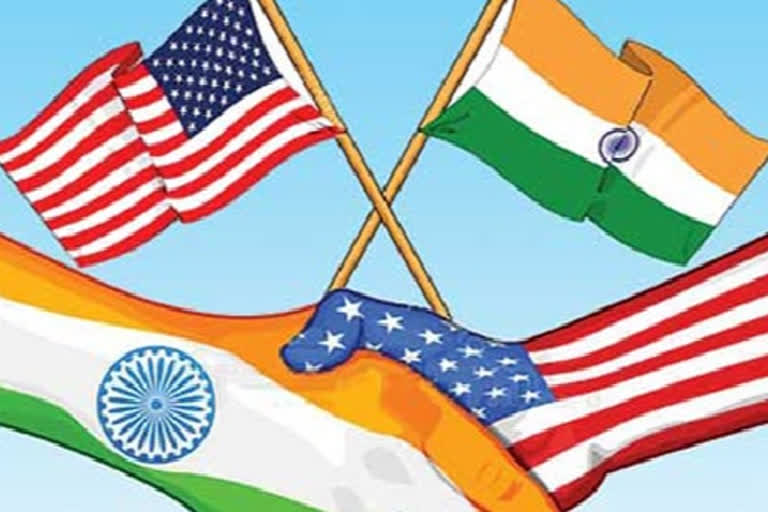New Delhi: While it has been no secret that President Joe Biden was intent on turning his predecessor Donald Trump’s policies on their head, the India-centric strategy of countering China had seemingly continued, until now, as recent indications are strong that the US may be refocusing on the ‘Pacific’ rather than the Trump administration’s India-centric strategy to contain a rising China.
NATO Summit in Madrid
On June 29-30, 2022, the NATO Summit in Madrid was considered to be a historic one where all 30 member countries and key NATO partners from Europe and Asia converged. While the Summit focused on the deepening strategic partnership between Russia and China, and for the first time, included NATO’s Asia-Pacific partners Australia, Japan, New Zealand and Korea, India was not invited. In effect, India has been left out of the roadmap for expanded cooperation, which sought to ensure “closer political consultation and joint work on issues of mutual interest, including cyber and hybrid threats, maritime security, counterterrorism and the impact of climate change on security.”
Religious Freedom
On Saturday (July 2), David Curry, Commissioner of the US Commission on International Religious Freedom (USCIRF), tweeted: “USCIRF is concerned about the Indian government’s continued repression of critical voices— especially religious minorities and those reporting on and advocating for them.” Another USCIRF Commissioner Stephen Schneck also tweeted: “Human rights advocates, journalists, activists and faith leaders in #India face harassment for speaking out and reporting religious freedom conditions. This is not reflective of a country with a history of democracy.”
On Thursday, Rashad Hussain, the US ambassador-at-large for international religious freedom, warned that the ‘Early Warning Project at the Holocaust Museum’ ranked the risk of mass killings in India as the second highest in the world. Notably, Hussain added that the US is speaking directly to India about its concerns. Terming the comments as “biased and inaccurate”, on Saturday, Arindam Bagchi, spokesperson of India’s Foreign Ministry said: “These comments reflect a severe lack of understanding of India and its constitutional framework, its plurality and its democratic ethos… Regrettably, USCIRF continues to misrepresent facts time and again in its statements and reports in pursuance of its motivated agenda.”
Read: Modi Biden Bilateral Meet: PM arrives at White House
“Such actions only serve to strengthen concerns about the credibility and objectivity of the organisation.” The significance of the latest tussle lies in the fact that USCIRF is a government agency that makes policy recommendations to the President, Secretary of State, and Congress and tracks the implementation of these recommendations.
In its report for 2022 that was released on April 25, 2022, the USCIRF had listed India as a ‘Country of Particular Concern’ (CPC) placing it in a group of 15 countries which includes Russia, China, Taliban-controlled Afghanistan, Burma, Eritrea, Iran, Nigeria, North Korea, Saudi Arabia, Syria, Tajikistan, Turkmenistan and Vietnam. On June 2, 2022, the US State Department strongly indicted India on the state of religious freedom in the country in its annual ‘Report on International Religious Freedom 2021’. In his address on the report, Antony Blinken, the US Secretary of State, also cited an Indian example: “For instance, in India, the world’s largest democracy and home to a great diversity of faiths, we’ve seen rising attacks on people and places of worship.”
India’s autonomous policy
The reasons for the recently widening distance between India and the US are not too far to seek. While India has been forthcoming in aiding and supporting the US on its Indo-Pacific policy to counter China, it has refused to toe the US-led western line on categorically condemning Russia’s military action in Ukraine that began at the crack of dawn on February 24.
On the contrary, business relations between India and Russia have been on the upswing after the imposition of US-led sanctions on Russia after the Ukraine conflict began on February 24, 2022. India is also a founder member of the increasingly assertive BRICS, a platform of emerging economies that was set up in 2009.Besides India, BRICS comprises Brazil, Russia, China and South Africa, with a very strong likelihood that Iran and Argentina may soon join even as a host of countries are believed to be waiting in the wings to join the grouping. The combined strength of the members will make BRICS a key force to reckon with for the established US-led world order.
Read: PM Narendra Modi holds talks with POTUS Biden
At the moment, BRICS represents about 43 % of humanity with just India and China together representing 36% of the world population. On the other hand, the European Union (EU) represents only about 9.8% of humanity while the 30-member NATO alliance represents about 12.22% of the world's population. BRICS’ combined projected GDP for 2021 calculated from figures given by the International Monetary Fund World Economic Outlook for October – 2021 works out to more than a quarter of the global GDP.
The share of the EU as a share in the global GDP based on purchasing-power-parity totalled an estimated 15.4%. In 2020, the share of G-7 countries in the global GDP amounted to 31% while G-20 accounted for 42% of the global GDP. According to the 2020 military strength of nations calculated by the ‘Global Firepower’ which ranks the US as the world’s mightiest power, Russia is in the second position, China is third and India is fourth. Brazil is ranked at number 10th.
In effect, four of the BRICS nations figure in the top-ten list of most powerful militaries. In the aftermath of the Ukraine conflict, both the US-led bloc and the Russia-China axis had been wooing India. While India has been averse to taking a clear position, the manoeuvring space for doing so is getting constricted. But without doubt, whichever direction India chooses to take, its economic, demographic and military heft will have significant weight.


